Did you see the game last night? Chances are, many of your students did. And many more of them probably play an after-school sport. In fact, across the United States, 34.6% of high school students participate in sports. That’s almost six million students! As we know, tapping into students’ personal interests, like sports, is a great way to grab their attention. So incorporating sports into your classroom can boost retention and engagement, especially in the STEM subjects. If you’re wondering how to do that, there’s an easy solution—STEM Sports Kits. STEM Sports provides turnkey K–8 curricula that use sports as a real-life application for hands-on STEM learning. There’s so much STEM behind kids’ favorite sports, and now they can find out all about it!
What Are STEM Sports Kits?
Imagine P.E. students calculating the probability of penalty kicks in soccer or measuring the force of a tennis swing. Or using math to measure the area and perimeter of a volleyball court. Anything can become a STEM learning opportunity, including sports. So, STEM Sports stepped up to help teachers make the most of the opportunity. STEM Sports provides kits and curriculum for students to use with nearly a dozen popular sports, including football, hockey, soccer, basketball, and more. Each kit includes necessary equipment for play, while the curriculum is aligned with NGSS, Common Core, and national P.E. standards. Combine STEM academics with sports to help K-8 students develop personal interests and career skills! Read on to see why STEM Sports won the 2024 Educators Pick “Best of STEM” award and learn how to implement sports lessons in your school.
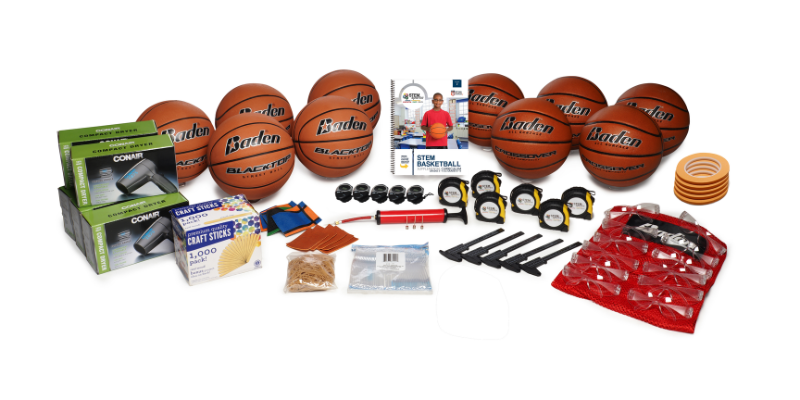
Choosing a STEM Sports Kit
With so many sports to choose from, how can teachers pick which STEM Sports kit to use? The following is the full list of individual STEM Sports kits:
- Baseball
- Basketball
- Bike
- Football
- Golf
- Hockey
- Lacrosse
- Soccer
- Softball
- Tennis
- Volleyball
With these kits, students will learn important STEM concepts by playing and analyzing each sport. Covering each letter in STEM—science, technology, engineering, and math—these kits keep students engaged by tapping into the sports they love. For teachers who want to take sports education further, STEM Sports also offers other flexible options. Along with Multi-Sport Kits, the STEM Sports team has created adaptive Special Teams Players Kits for students with disabilities and the comprehensive All-Star Kit for homeschoolers.
Multi-Sport Kits
If you want to focus on multiple sports at once, try the Multi-Sport Kits. Divided between grade levels, these kits include a variety of options that cater to different abilities or STEM topics. The K-2 Multi-Sport Kit includes pee-wee footballs, soccer balls, playground balls, and more items suited for younger players. After going through lessons on the science behind each sport, students will show off their knowledge with final challenges. They’ll design a specialized basketball shoe and create a golf course to help them get a hole-in-one.
The more advanced Multi-Sport Kit, for grades 3-5 and 6-8, combines lessons from the Basketball, Football, Soccer, and Volleyball modules. With a curriculum split into modules for each grade level, students will learn about heart rate and calories, probability and physics, and more. Throughout the curriculum, the lessons and activities are structured to be easily scaled for different grade levels, so teachers won’t have to do as much to adapt them to a new class. Teachers can also find Multi-Sport Ball Kits, including modules on ball sports like Baseball, Golf, and Softball, or Multi-Sport Net Kits with Hockey, Lacrosse, and Tennis.
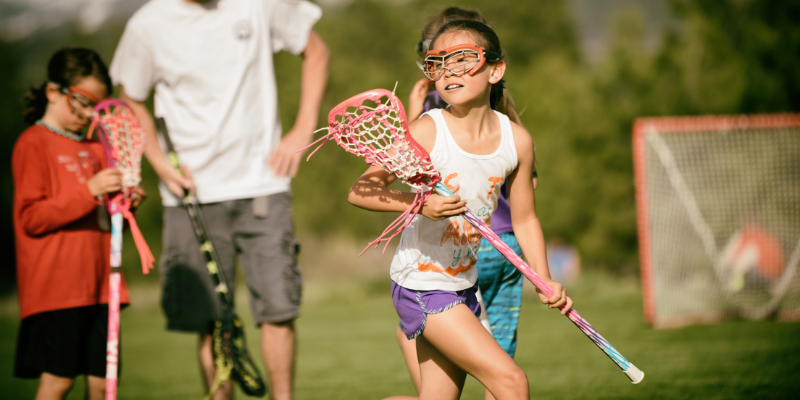
Unboxing STEM Sports
So, what comes in an average STEM Sports Kit? We ordered the Multi-Sport Kit for grades 3-5 and 6-8 to find out. Although each kit comes with slightly different equipment, depending on the sports selected, the Multi-Sport Kit provides a helpful example of what to expect. The kit covers several different sports, as implied by the name. As such, it comes with balls for each sport, with deflated basketballs, soccer balls, footballs, and volleyballs, and foam footballs. It’s easy to inflate the balls with the provided ball pump—then, you can jump into playtime. Students can don the included pinnies to differentiate between teams, use the heart rate monitors and digital stopwatches to gather data during play, and put their supplies away in provided ball bags when they’re done. STEM Sports is designed to make integration simple, so the kits provide as much equipment as possible.
Most of the sports equipment is self-explanatory—you use the basketball to play a game of basketball, for example—but some of the included materials need a bit more explanation. Several pieces of equipment have a special function related to STEM learning. One such item is the softball, which has been cut in half to display its cork core, showing students how the composition affects the ball’s weight and movement. The kit also includes items like toothpicks, plastic straws, ribbon spools, and fishing line, which, on the surface, don’t have anything to do with sports. However, students can use these items to explore STEM concepts alongside the sports equipment. In the Adaptive Technology lesson, for example, they’ll use these accessories to design and prototype a device that will help adaptive players retrieve the ball after a play.
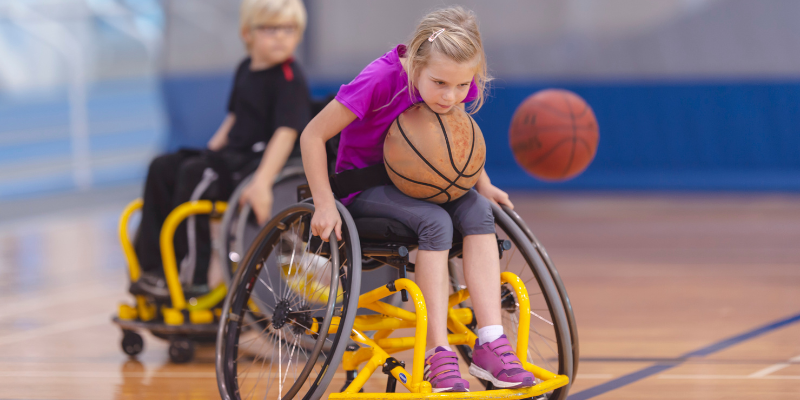
STEM Sports Curriculum
Each kit, whether Multi-Sport or one-sport, includes curriculum that delivers 16 hours of instruction in eight 5E lessons. In fact, if teachers already have sports equipment at hand, they can buy the STEM Sports Manual on its own and simply apply the lessons. Or, they can scale the curriculum for virtual instruction on Zoom or Google Classroom using the included PowerPoint presentation decks and digital worksheets. Whether in person or online, these lessons address every letter in STEM, with deep dives into the tech used in sports, the math and physics involved in the players’ movements, and the engineering of equipment.
The Multi-Sport Kit curriculum, for example, includes lessons that cover multiple subjects at different grade levels. For grades 3-5, it covers fractions, the scientific method, properties of matter, multiplication and division, the engineering design process, and more. Moving up to grades 6-8, students will cover statistics and probability, graphing functions and slope, testing prototypes, controlled science experiments, and more. The scalable lessons provide continuity between the grades while making teachers’ lives easier. Best of all, there’s no professional development required—everything makes sense out of the box!
STEM Sports sample lesson
Let’s take a closer look at one lesson from the Multi-Sport Kit. Grades 3-5 can explore the properties of matter with hands-on experiments in the lesson “Properties of a Football and a Foam Football.” First, students use a worksheet to record the behaviors of both a foam and a regular football when thrown and bounced. They’ll use almost all their senses (except taste!) to describe the balls, then measure the size and mass of each one. The workbook provides a page for students to fill out, which can be easily photocopied if necessary. Then, they can answer questions like: Why do the balls behave differently? Where does the ball bounce the most and why? After the activity, students should be able to explain how different characteristics of a football, like its size, shape, and weight, affect bounce height and direction.
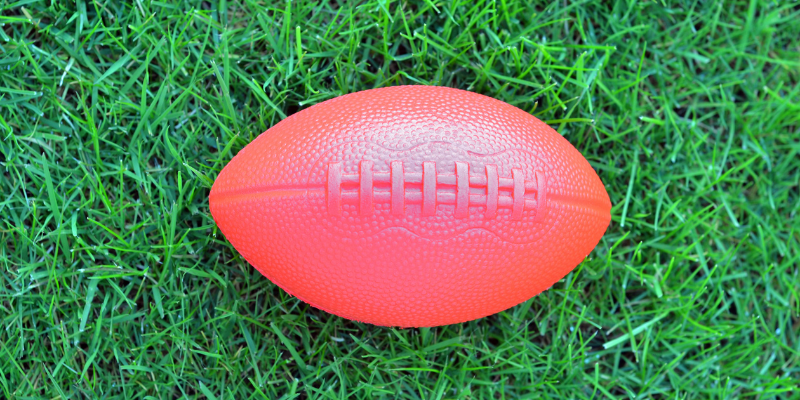
Even though they’re learning scientific principles, students get to play at the same time. Infusing playtime into learning helps them feel more excited about the material, increasing their level of engagement in the lesson. Plus, many students likely have an existing interest in sports, so teachers won’t even have to try to get them interested. And instead of learning about physical properties like mass in the abstract, students will be able to directly observe the properties and their effects on an object’s behavior. They’ll also be more likely to remember the lesson because they directly participated—no getting distracted or zoning out with STEM Sports!
Future Sports Applications
Each STEM Sports lesson includes a section detailing jobs related to the specific material covered in the lesson. The “Properties of a Football” lesson, for example, includes occupations like Equipment Manager, Materials Engineer, and Team Merchandise Designer. Each job is directly tied to what students have just learned. Students who liked exploring the mass and composition of the two footballs from the lesson above might pursue a career engineering the perfect equipment. On the other hand, students who were more interested in the aesthetic of the footballs could enter the merch design sphere. And some of the potential applications of STEM Sports lessons may not even exist yet! In fact, 85% of STEM jobs anticipated for the year 2030 have yet to be invented.
Implementing STEM Sports in Your Classroom
STEM Sports combines physical activity and cognitive thinking to create a memorable, effective learning experience. Students who may never have considered a STEM career could change their minds after experiencing these lessons. And teachers get a comprehensive curriculum delivered to their door. For more information on STEM Sports and other EdTech, explore our offerings. Follow us on Twitter/X and Instagram and sign up for our newsletter for the latest in STEM news! And be sure to contact us if you have any further questions.



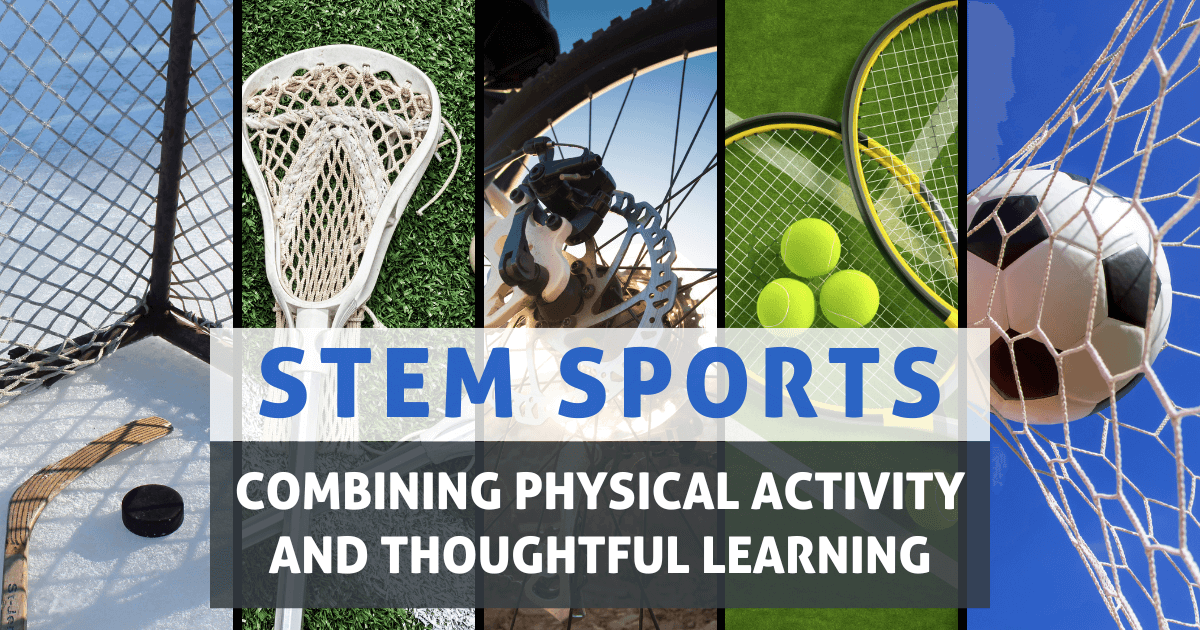
2 Comments